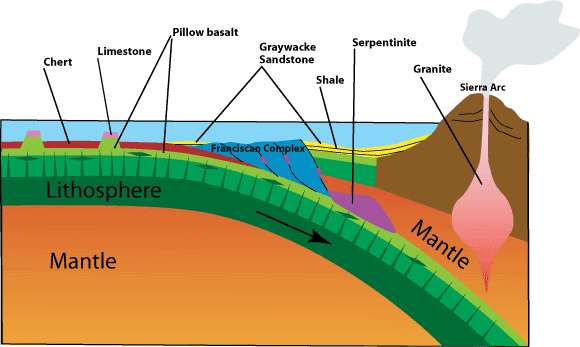|
The San Andreas fault system is a relatively new geologic feature in the Bay Area; only forming within the last 28 million years. Older rocks in the area formed when the tectonic plate underlying the Pacific Ocean plunged under the North American Plate at a subduction boundary. The unusual rocks of the world-famous Franciscan Complex, named at San Francisco and underlying the Presidio, formed at this plate boundary. As the Pacific Ocean crust was thrust under the North American Plate, the Franciscan Complex formed from oceanic rocks that were scraped off of the subducting plate and churned into continental sediments derived from the North American Plate. This process forms a mixture of rocks (mélange) composed of blocks of oceanic crust (basalt and greenstone) and overlying sediments (chert, limestone, and shale) mixed with submarine landslide deposits (graywacke sandstone and shale) shed from the North American continent and with pieces of metamorphic and mantle rock (usually altered to serpentinite), which were forced to the Earth’s surface. The larger, more intact blocks in the Franciscan are called terranes, such as the Marin Headlands Terrane, which also underlies some of the Presidio. Each terrane has its own unique geologic history. 
|
Last updated: February 28, 2015
